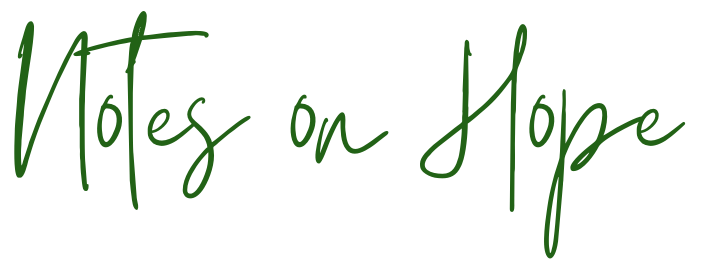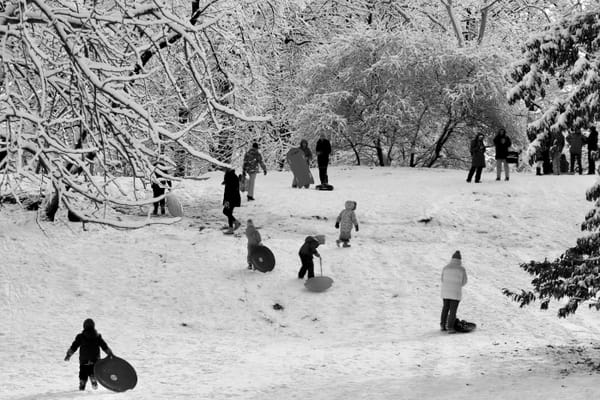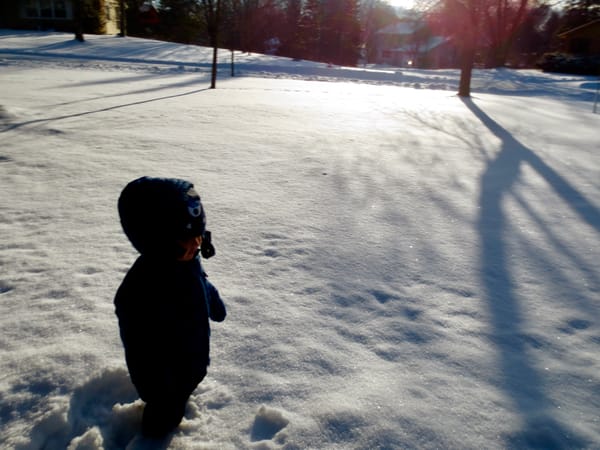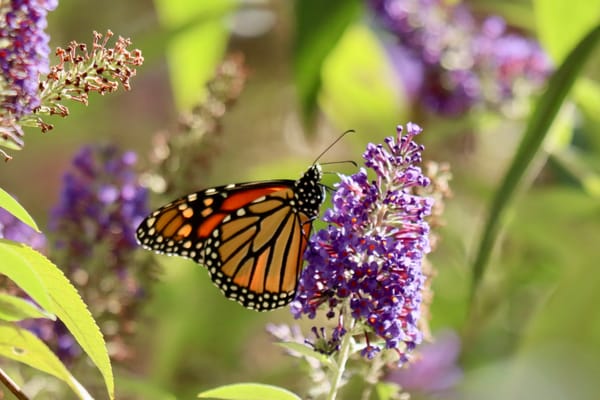Redefining Resilience
We don't have to go it alone

"the mind says:
this river has no bottom
the heart says:
we can build a bridge here"
~Cleo Wade
In a recent essay in The Guardian, Natasha Sholl wrote a critique of “resilience culture” in which she questions the extent to which we have transformed the idea of resilience into a false idol. She suggests that the way we conceptualize and valorize resilience often serves to place an additional burden on the individual who is suffering, while alleviating our communal responsibilities to one another.
Sholl has experienced multiple tragedies in her life of the sort that would surely challenge the fortitude of even the most resilient individual, and she has observed that her story often seems to unintentionally feed a highly individualistic narrative of resilience, in which people find inspiration in an impression of strength and an ability to “bounce back” that doesn’t actually reflect the complex reality of moving through difficulty. In framing resilience in this way, Sholl argues, we create an individualistic mindset about suffering that is neither realistic nor helpful. She says,
“My issue isn’t necessarily the concept of resilience itself, it’s the way our culture has co-opted resilience to change its meaning. There is an emphasis here on the individual and not the collective. In many ways, it’s an excuse for society to place the burden of being OK on the person suffering.”
Sholl also notes that this understanding of resilience creates a binary perspective in which we view people as either resilient or not when, in reality, resilience is much more fluid. When we are buffeted by difficult periods in life, we oscillate between sturdiness and fragility in ways that are not always consistent, predictable, or linear. A simple understanding of resilience as a character trait or a destination, rather than an ongoing process of navigating difficulty, may seem inspiring when we think we’ve witnessed this mythic individual strength. But it establishes unattainable expectations for both the person suffering and for our ability to manage future challenges of our own.
As Sholl explains, the problem here isn’t resilience itself but our mischaracterization of resilience. Resilience doesn’t have to be binary or isolating. In fact, a resilience that is found, at least in part, in collective strength is much more aligned with the research on true resilience than the reductive impression we are given by cultural messages that glorify individual strength and perseverance and that expect a journey with a clear end point. Resilience is not simply the other side of difficulty. It is the mucky wading through, and we don’t have to do this wading alone to be resilient.
There are multiple research models for resilience, and strong relationships are a common thread among these models. As the psychologist, Tovah Klein, shares in her recent book, Raising Resilience, emotional safety, authentic connection to others, and a feeling of being accepted by those who love us are all foundational to building true resilience. She explains that resilience is as much about knowing we are not alone as it is about individual strength.
Like Sholl, I don't question the importance of resilience as a factor in our development or as something we need to foster in our children. Life is full of ups and downs, and being able to move through these challenges is essential to long term wellbeing. But, when we define resilience only as a strength of the individual, we cut ourselves and others off from the critical role that social support plays in managing the difficult parts of life and in bolstering our own strength. And, if we have a binary picture of resilience that doesn’t acknowledge the extent to which our ability to cope ebbs and flows, then we set an expectation for managing distress that is self-defeating and that further limits our ability to accept support or offer it to others.

In a panel discussion on mental health at The Aspen Institute this summer, the adolescent psychologist, Lisa Damour, spoke about the importance of “normalizing distress” for ourselves and our children. She explained that, in our effort to focus on “wellness,” which of course comes from a place of good intentions, we have inadvertently minimized the normal and appropriate role of distress. Damour says,
“One of the ways we can be really helpful to adolescents and the adults around them is to say, distress is an absolutely essential part of what it means to be human. It helps us grow and it helps us learn. It guides us. It gives us feedback. And on its own psychological distress is not a mental health concern. You’re sometimes supposed to feel anxious. Of course you should feel sad. There’s plenty to be stressed about, and that is the right response.”
Resilience is not the absence of distress or the triumph over distress, as we often view it. Rather, resilience is grounded in the ability to acknowledge difficulty and be in conversation with the feelings that arise when we are struggling. The psychiatrist and neuroscientist, Thomas Insel, who was also part of the panel, went on to explain that community is a powerful force for both normalizing distress and providing the kind of empathetic support that is essential to true resilience. He notes that when we are able to reassure each other that it is sometimes appropriate to feel bad and be in community with one another through these experiences, we become more resilient.
In reflecting on resilience, I often think about the moments when very young children fall and turn to us to gauge their own response. When the adult has a reaction of dramatic concern, young children develop a sense of fragility, because the caregiver they rely on to help them make sense of their early emotions is signaling that they are indeed fragile. However, I often see teachers and parents take this to the opposite extreme, and react with a broad smile and a high pitched exclamation of, “You're okay!” I worry when I see this reaction that, while we may not be communicating fragility directly, we are instead communicating that distress is irrational or intolerable—a message that does not build resilience, though it may foster the ability to feign resilience. It must be possible, instead, to acknowledge distress and find resilience in that acknowledgement and in having others around to offer support, rather than in our ability to pop back up quickly with a smile.
In the classroom, I tried to find this path by simply naming what had happened and shifting the emotional barometer back to the child themselves. I might say, “Oops! You fell down.” Then I would wait to see what the child did next, looking to them to gauge their own reaction and trusting their capacity to do so. Often the child would pause for a moment to get their bearings and would then stand back up on their own. Sometimes tears would come, and then I would offer help. We would check over the child’s body together to affirm that everything was, in fact, okay. And if it was, I might say, “That must have felt surprising. Do you need a hug?”
We can support children and each other in developing a sturdy ability to rebound, without erasing distress or our very human need for connection and care. Isn’t there a powerful message of resilience, not only in being able to get up after we fall, but in being able to accept help or comfort when we need it? And, perhaps equally important, I think there is a lesson in these moments for how a child might react when someone else falls. There is a ripple of community that occurs when we show care. By offering help, we demonstrate that this is what we do for others, that when we see someone in distress, we lend a hand without expecting anything of them. Sholl concludes her essay by saying,
“True resilience is living with what is. Sometimes that looks inspiring and sometimes that looks like just getting through the day. It’s rarely pretty, often exhausting and always made easier without the burden of expectation.”
Having this reality recognized by someone else is far more powerful than being admired for our capacity to move past difficulty unscathed. One of the most comprehensive and reliable studies of American childhood, encompassing 90,000 children across demographic categories and examining over a hundred variables in their lives, found that two factors stood out as being the most protective against later depression, anxiety, and high risk behavior. The first protective factor was a feeling of connectedness at home and the second was a feeling of connectedness at school.
This finding runs counter to the image we have of resilience as an individual trait and situates it instead within community connections. We are protected, not by our ability to hoist ourselves up alone, but by our connections to others and our willingness to help each other. Perhaps true resilience is as much about the net woven around us by people who care for us, as it is about our own capacity to survive a fall.
Wishing you the strength of care and connection,
Alicia
If you think someone else in your life might enjoy reading Notes on Hope, please share. It’s always easier to hold onto hope when we’re not doing it alone.





